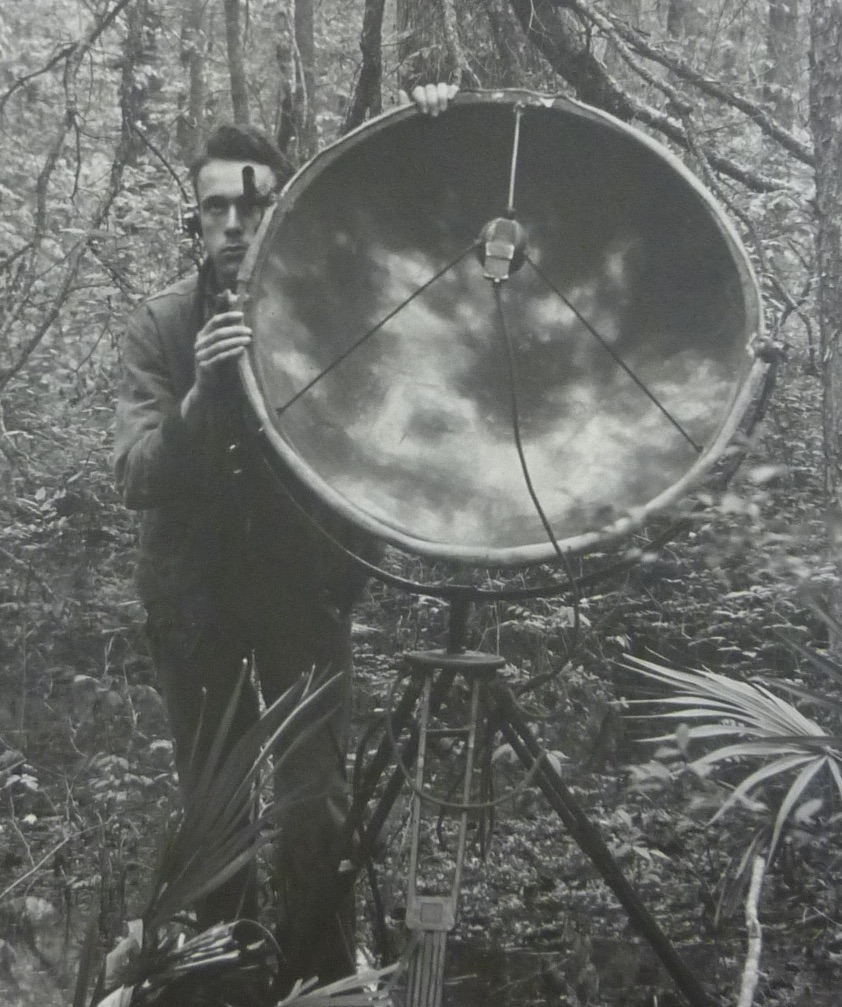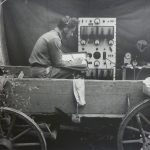Artefacts
Parabolic microphone
Parabolic microphone
The parabolic microphone uses a parabolic reflector to collect and focus sound waves onto a receiver, ensuring great directional sensitivity along the axis to which the reflector is directed. The microphone found initial application in sports and theater broadcasting, and later in eavesdropping and espionage during World War II. It also became a key instrument in the recording of animal vocalizations, and as such provided an important stimulus to the field of biological acoustics.
The principle was first applied to bird recording in 1932 by Cornell ornithologists, taking inspiration from microphone placement techniques in movie theaters. They cast their own microphones from World War I molds in the physics department, once made to anticipate airplanes arriving, and using plaster techniques from the American Natural History Museum.
Source: Keane, M. Peter. Oral History Interview. Macaulay Library of Natural Sounds, Cut RSL2002-01.
© 2015 – 2026 Humboldt-Universität zu Berlin







